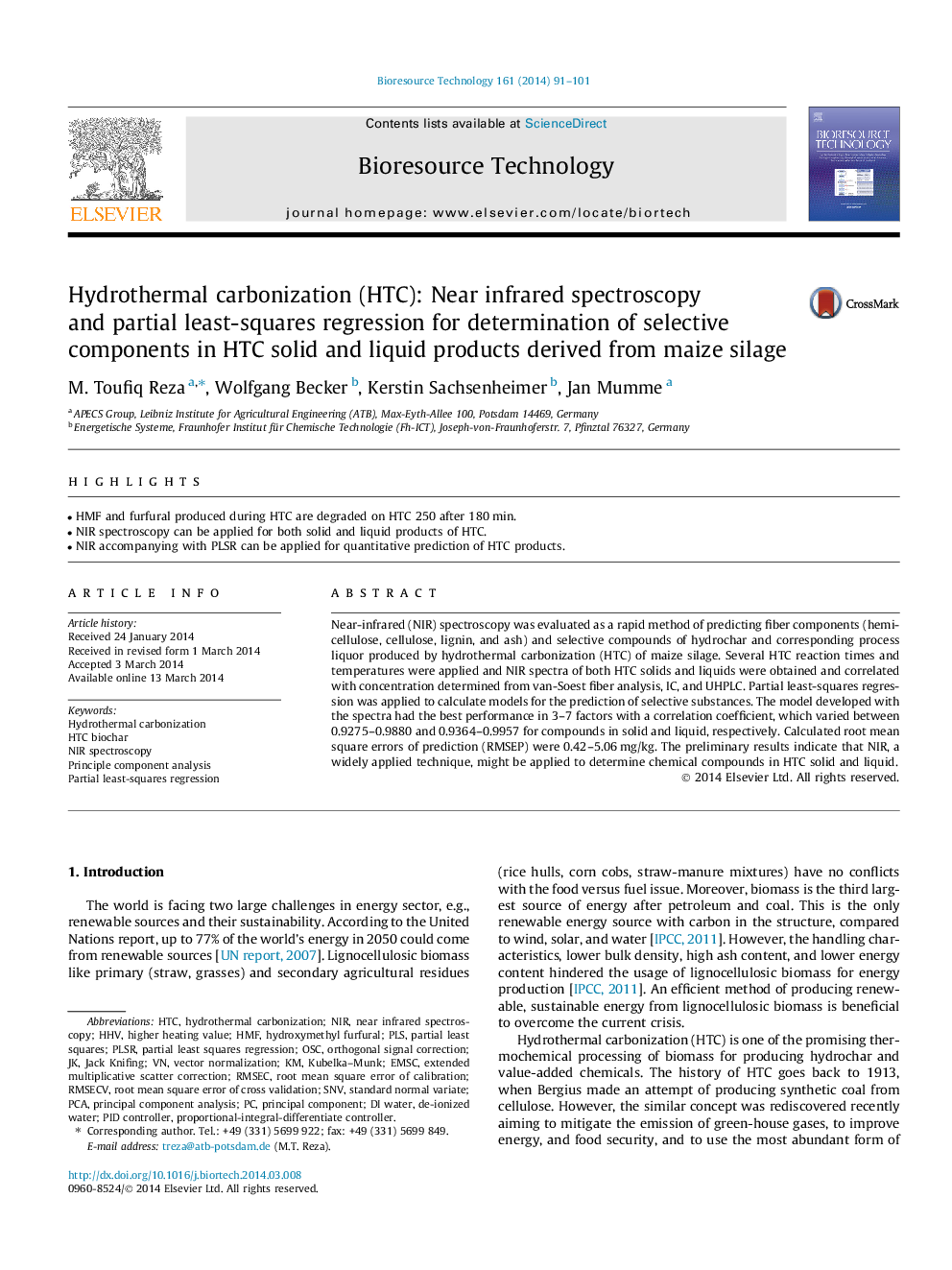| Article ID | Journal | Published Year | Pages | File Type |
|---|---|---|---|---|
| 7078520 | Bioresource Technology | 2014 | 11 Pages |
Abstract
Near-infrared (NIR) spectroscopy was evaluated as a rapid method of predicting fiber components (hemicellulose, cellulose, lignin, and ash) and selective compounds of hydrochar and corresponding process liquor produced by hydrothermal carbonization (HTC) of maize silage. Several HTC reaction times and temperatures were applied and NIR spectra of both HTC solids and liquids were obtained and correlated with concentration determined from van-Soest fiber analysis, IC, and UHPLC. Partial least-squares regression was applied to calculate models for the prediction of selective substances. The model developed with the spectra had the best performance in 3-7 factors with a correlation coefficient, which varied between 0.9275-0.9880 and 0.9364-0.9957 for compounds in solid and liquid, respectively. Calculated root mean square errors of prediction (RMSEP) were 0.42-5.06Â mg/kg. The preliminary results indicate that NIR, a widely applied technique, might be applied to determine chemical compounds in HTC solid and liquid.
Keywords
PLSRMSECKubelka–MunkEMSCSNVHHVOSCHTCPLSRRMSECVHMFNIRPCADe-ionized waterStandard normal variatePrinciple component analysisPrincipal component analysisOrthogonal signal correctionPartial least squaresRoot Mean Square Error of CalibrationDI waterPartial least-squares regressionPartial least squares regressionRoot mean square error of cross validationNIR spectroscopyprincipal componentNear Infrared spectroscopyhydroxymethyl furfuralHydrothermal carbonizationPID controllerHigher heating value
Related Topics
Physical Sciences and Engineering
Chemical Engineering
Process Chemistry and Technology
Authors
M. Toufiq Reza, Wolfgang Becker, Kerstin Sachsenheimer, Jan Mumme,
